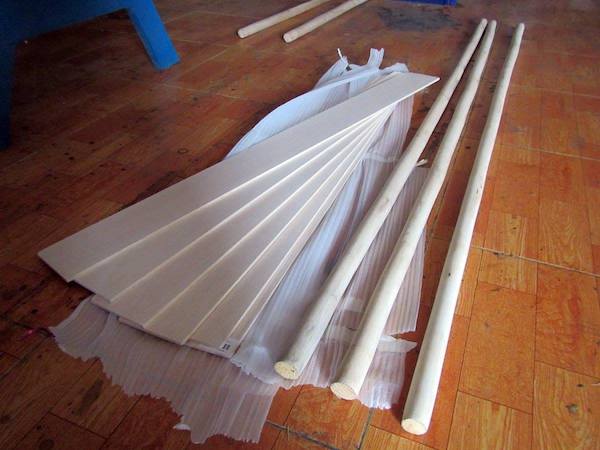 ó mấy vấn đề về “thiết kế thuyền” từ xưa đến giờ không nói, vì biết nói ra cũng không có ai chia xẻ. Nhân tiện nói ra đây để khuyến khích, nếu ai đó đi vào “thiết kế thuyền”, vâng, chữ dùng quá là to, thực ra nó cũng đơn giản, chẳng có gì lớn lao. “Thuyền” ở đây hiểu là dạng recreational boat nhỏ chứ không nói về ship, ship chắc chắn là có nhiều chuyện phức tạp.
ó mấy vấn đề về “thiết kế thuyền” từ xưa đến giờ không nói, vì biết nói ra cũng không có ai chia xẻ. Nhân tiện nói ra đây để khuyến khích, nếu ai đó đi vào “thiết kế thuyền”, vâng, chữ dùng quá là to, thực ra nó cũng đơn giản, chẳng có gì lớn lao. “Thuyền” ở đây hiểu là dạng recreational boat nhỏ chứ không nói về ship, ship chắc chắn là có nhiều chuyện phức tạp.
Đầu tiên hết là về phần mềm Free!Ship, đây là một phần mềm open-source gốc từ Nga, rất dể học và sử dụng, viết bằng ngôn ngữ Delphi. Vâng, cái anh Nga là chúa trùm chơi trò “cộng sản chủ nghĩa”, nếu không có những kiến thức về “thiết kế thuyền” đóng gói trong cái phần mềm này thì còn lâu chúng ta mới tiếp cận được cách làm, dù chỉ là ở mức độ sơ đẳng… 😃
Kế đến là mấy độ đo (measure) vật lý: Cp (prismatic coefficient), Cb (block coefficient), Cm, Cw, Kmt, S, LCB, LCF, etc… Cần có thời gian để hiểu các độ đo này, và biết được tại sao Cb < 0.3 thì thuyền sẽ khó giữ hướng đi thẳng, cần phải lắp thêm rudder hay skeg, tại sao Cp < 0.5 thì thuyền hiệu quả ở tốc độ thấp, nhưng sẽ hao tốn nhiều năng lượng ở tốc độ cao, etc...
Tiếp đến là độ ổn định tĩnh & động (static & dynamic stabilities), tại sao 1 số chiếc xuồng đi vững trên nước êm, ra đến vùng sóng gió lại lắc mạnh, và tại sao 1 số chiếc mới ngồi lên có cảm giác “bất ổn” nhưng ở trong sóng to gió lớn lại thấy “êm”. Xuồng làm cho khách du lịch đều là dạng đầu, còn dân “chuyên nghiệp” lại thích dạng sau, tất cả đơn thuần chỉ là vật lý!
Cuối cùng là sức cản nước (resistance), phần mềm có thể tính ra lực cản là bao nhiêu. Ví dụ như ở 3 knot là 8 Newton, ở 4 knot là 15 Newton, và tính ra được công hao tốn, ví dụ như 1 người chèo bình thường thì công sinh ra ở trong khoảng 50 ~ 100 Watt. Với khả năng tập luyện thể chất như vậy, như vậy thì bạn có thể chèo tốt ở tốc độ nào, trong bao lâu, etc… 😅

 hả riêng gì VN, hàng xóm là Đài Loan cũng gần giống thế, đến mức dân biểu tình phản đối, sử dụng những khẩu hiệu như: 還我海洋國家 – Hoàn ngã hải dương quốc gia – trả lại tôi một quốc gia biển, 水域解嚴 – Thuỷ vực giải nghiêm – không được cấm nước. Nói thay đổi không phải một sớm một chiều, đầu tiên là khắc phục tâm lý “sợ nước”.
hả riêng gì VN, hàng xóm là Đài Loan cũng gần giống thế, đến mức dân biểu tình phản đối, sử dụng những khẩu hiệu như: 還我海洋國家 – Hoàn ngã hải dương quốc gia – trả lại tôi một quốc gia biển, 水域解嚴 – Thuỷ vực giải nghiêm – không được cấm nước. Nói thay đổi không phải một sớm một chiều, đầu tiên là khắc phục tâm lý “sợ nước”.

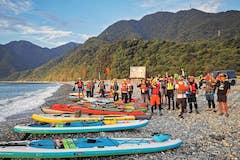

 ã quyết định đặt tên chiếc kayak kế tiếp là Serenity, chính thức là 1 “danh từ” chứ không còn là “tính từ” như trước (Serene – x). Tiếp tục công việc design đã làm từ
ã quyết định đặt tên chiếc kayak kế tiếp là Serenity, chính thức là 1 “danh từ” chứ không còn là “tính từ” như trước (Serene – x). Tiếp tục công việc design đã làm từ 

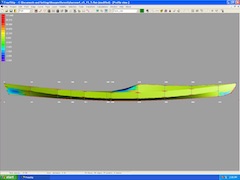

 acebook nhắc, ngày này 4 năm trước, “đẽo” cái mái chèo… Dụng cụ trong hình được gọi là “spokeshave”, tiếng Việt không có từ tương đương, về nguyên tắc cũng gần giống như cái bào. Chữ “shave” có nghĩa là “cạo”, như cạo râu, nên có thể tạm gọi dụng cụ này là… “cái cạo” 😀 Spokeshave linh hoạt hơn, nhưng cũng khó điều khiển hơn, và thường cho nhát cắt dày hơn…
acebook nhắc, ngày này 4 năm trước, “đẽo” cái mái chèo… Dụng cụ trong hình được gọi là “spokeshave”, tiếng Việt không có từ tương đương, về nguyên tắc cũng gần giống như cái bào. Chữ “shave” có nghĩa là “cạo”, như cạo râu, nên có thể tạm gọi dụng cụ này là… “cái cạo” 😀 Spokeshave linh hoạt hơn, nhưng cũng khó điều khiển hơn, và thường cho nhát cắt dày hơn…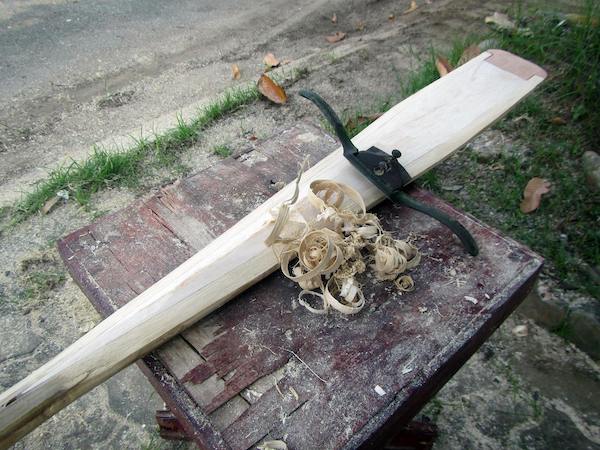
 gày xưa, khi kayak hãy còn là công cụ “săn bắt hái lượm” ở đảo Greenland. Nói kayak xuất phát từ Greenland không hoàn toàn đúng, nhưng để đơn giản hoá vấn đề, tạm chấp nhận như thế. Ngày xưa, những người đàn ông “da đỏ” dùng kayak đi săn hải cẩu (seal), hải mã (walrus). Đây là những loài động vật lớn, nặng từ vài tạ cho đến vài… tấn. Họ ngồi trên xuồng, phóng lao vào những con vật khổng lồ ấy, chúng sẽ không chết ngay đâu, và sẽ kéo mũi lao cùng chiếc xuồng đi cho đến khi kiệt sức, không cần phải nói, đó là một cuộc chiến sinh tồn thật sự.
gày xưa, khi kayak hãy còn là công cụ “săn bắt hái lượm” ở đảo Greenland. Nói kayak xuất phát từ Greenland không hoàn toàn đúng, nhưng để đơn giản hoá vấn đề, tạm chấp nhận như thế. Ngày xưa, những người đàn ông “da đỏ” dùng kayak đi săn hải cẩu (seal), hải mã (walrus). Đây là những loài động vật lớn, nặng từ vài tạ cho đến vài… tấn. Họ ngồi trên xuồng, phóng lao vào những con vật khổng lồ ấy, chúng sẽ không chết ngay đâu, và sẽ kéo mũi lao cùng chiếc xuồng đi cho đến khi kiệt sức, không cần phải nói, đó là một cuộc chiến sinh tồn thật sự. ừ 10, 15 năm trước, tôi đã có nhận định rằng sức khoẻ thể chất và đặc biệt là sức khoẻ tinh thần người Việt có vấn đề, 70~80% người Việt có biểu hiện bệnh lý thần kinh, thể nặng hay nhẹ, dạng này hay dạng khác! Nguyên do sâu xa nằm ở tầng văn hoá, thiếu chiều sâu, thiếu hiểu biết, chia xẻ giữa người và người, thiếu khả năng xây dựng giá trị cộng đồng. Cộng với sự thiếu vận động thời gian dài dẫn đến tâm hồn và cảm xúc xơ cứng! Không có đủ kiên nhẫn tìm hiểu vấn đề gì cho thấu đáo, ai nói gì cũng tin, sẵn sàng nghe theo bất kỳ sự xúi dục vớ vẩn nào! Lật lại vụ “cha chơi đùa với con bị giết chết” mới thấy đó là cả một thế hệ bị “côn đồ hoá”! Cái “chấp ngã” quá lớn: điều tôi thấy phải đúng, điều tôi nghĩ phải đúng…
ừ 10, 15 năm trước, tôi đã có nhận định rằng sức khoẻ thể chất và đặc biệt là sức khoẻ tinh thần người Việt có vấn đề, 70~80% người Việt có biểu hiện bệnh lý thần kinh, thể nặng hay nhẹ, dạng này hay dạng khác! Nguyên do sâu xa nằm ở tầng văn hoá, thiếu chiều sâu, thiếu hiểu biết, chia xẻ giữa người và người, thiếu khả năng xây dựng giá trị cộng đồng. Cộng với sự thiếu vận động thời gian dài dẫn đến tâm hồn và cảm xúc xơ cứng! Không có đủ kiên nhẫn tìm hiểu vấn đề gì cho thấu đáo, ai nói gì cũng tin, sẵn sàng nghe theo bất kỳ sự xúi dục vớ vẩn nào! Lật lại vụ “cha chơi đùa với con bị giết chết” mới thấy đó là cả một thế hệ bị “côn đồ hoá”! Cái “chấp ngã” quá lớn: điều tôi thấy phải đúng, điều tôi nghĩ phải đúng…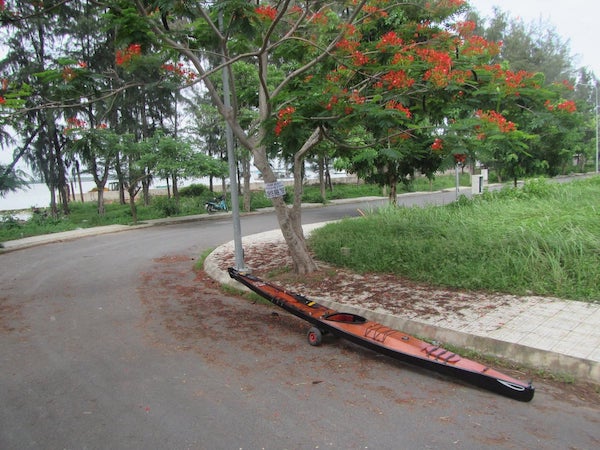

 hé qua hội chợ triển lãm SECC vì nghĩ là có thứ mình cần, rinh ngay một cây “Japanese saw – cưa tay Nhật Bản – dozuki, lưỡi mỏng, răng cắt nằm xen kẽ và ngược so với các loại cưa khác, nên cho vết cắt mỏng, chậm nhưng chính xác, đặc biệt là với các loại gỗ trung bình & mềm. Dụng cụ có thể dùng cho ghe, xuồng, tàu buồm nhiều vô khối, nhìn mà ham…
hé qua hội chợ triển lãm SECC vì nghĩ là có thứ mình cần, rinh ngay một cây “Japanese saw – cưa tay Nhật Bản – dozuki, lưỡi mỏng, răng cắt nằm xen kẽ và ngược so với các loại cưa khác, nên cho vết cắt mỏng, chậm nhưng chính xác, đặc biệt là với các loại gỗ trung bình & mềm. Dụng cụ có thể dùng cho ghe, xuồng, tàu buồm nhiều vô khối, nhìn mà ham…
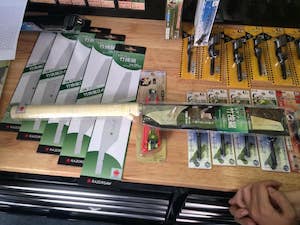
 ôm đó đi mua mấy cây mây (rattan) dài gần 2m, đường kính khoảng 3 ~ 4 cm, và một mớ gỗ balsa về làm cái mái chèo kiểu Greenland, làm xong đem cân nặng đúng 0.8kg, tính hết cả sợi thuỷ tinh, keo, sơn… (!!!) xài tốt, nhẹ nhàng đến tận giờ! Bực mình cái là balsa là loại gỗ khá rẻ, nhưng vì phải nhập khẩu nên giá thành lại trở nên khá đắt! 😞 Nhân tiện giải thích về thuật ngữ “composite”… nhiều năm qua thấy có nhiều quan niệm rất “buồn cười” về composite, ai cũng nói kiểu “biết rồi” nhưng khi đụng tay vào việc thì lại thấy… nó không đúng như cái mình “biết”! Người thì bảo phải là epoxy và ván ép, người thì bảo là polyester và sợi thuỷ tinh, người thì bảo phải lót xơ dừa như kiểu làm vỏ lãi ở miền Tây, etc…
ôm đó đi mua mấy cây mây (rattan) dài gần 2m, đường kính khoảng 3 ~ 4 cm, và một mớ gỗ balsa về làm cái mái chèo kiểu Greenland, làm xong đem cân nặng đúng 0.8kg, tính hết cả sợi thuỷ tinh, keo, sơn… (!!!) xài tốt, nhẹ nhàng đến tận giờ! Bực mình cái là balsa là loại gỗ khá rẻ, nhưng vì phải nhập khẩu nên giá thành lại trở nên khá đắt! 😞 Nhân tiện giải thích về thuật ngữ “composite”… nhiều năm qua thấy có nhiều quan niệm rất “buồn cười” về composite, ai cũng nói kiểu “biết rồi” nhưng khi đụng tay vào việc thì lại thấy… nó không đúng như cái mình “biết”! Người thì bảo phải là epoxy và ván ép, người thì bảo là polyester và sợi thuỷ tinh, người thì bảo phải lót xơ dừa như kiểu làm vỏ lãi ở miền Tây, etc…